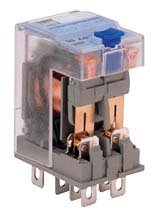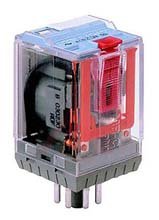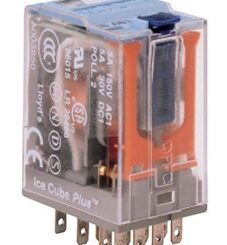125V DC Coil Non-Latching Relay
Introduction:
Relays are electromechanical devices used to control electrical circuits. They are used to control power loads, such as motors and lights, and to switch low-power signals, such as control signals. Relays consist of two main components: the coil and the contacts. The coil is an electromagnet that creates a magnetic field when it is energized, and the contacts are the switches that open and close the electrical circuit.
A non-latching relay is a type of relay that does not have a latching mechanism. This means that the relay’s contacts will only switch when the coil is energized. When the coil is de-energized, the contacts will return to their default position. In this article, we will discuss the 125V dc coil non-latching relay. We will explain how it works, its applications, and its advantages and disadvantages.

Working Principle:
The 125V dc coil non-latching relay works on the principle of electromagnetism. When the coil is energized, it creates a magnetic field that attracts the contacts, causing them to switch. When the coil is de-energized, the contacts return to their default position.
The relay’s coil is typically made of copper wire wound around a ferromagnetic core. When a current is applied to the coil, it creates a magnetic field that causes the contacts to move. The contacts are typically made of silver, which is a good conductor of electricity and resists corrosion.
Applications:
The 125V dc coil non-latching relay has a wide range of applications in the industrial and commercial sectors. It is commonly used in control systems, where it is used to switch power loads or low-power signals.
One common application of the 125V dc coil non-latching relay is in the control of motors. Motors require a lot of power to operate, and they often need to be switched on and off to control their speed or direction. The relay is used to switch the motor’s power supply, allowing it to be controlled by a control system.
The 125V dc coil non-latching relay is also used in lighting control systems. It is used to switch the power supply to the lights, allowing them to be turned on and off as needed. The relay can also be used to control the brightness of the lights by switching the power supply on and off at a high frequency.

Advantages:
The 125V dc coil non-latching relay has several advantages over other types of relays. First, it is easy to use and does not require any additional circuitry to operate. This makes it a simple and cost-effective solution for controlling electrical circuits.
Second, the 125V dc coil non-latching relay is reliable and durable. It can handle high currents and voltages, and it can withstand harsh environmental conditions. This makes it suitable for use in a wide range of applications, from industrial machinery to outdoor lighting systems.
Third, the 125V dc coil non-latching relay is versatile. It can be used to switch power loads or low-power signals, making it a flexible solution for controlling electrical circuits. It is also available in a wide range of contact configurations, allowing it to be customized for specific applications.
Disadvantages:
Despite its advantages, the 125V dc coil non-latching relay has a few disadvantages. First, it is not suitable for high-speed switching applications. The relay’s contacts take time to move, which can limit its use in high-frequency applications.
Second, the 125V dc coil non-latching relay can generate electromagnetic interference (EMI). The magnetic field created by the coil can interfere with nearby electrical circuits, causing them to malfunction. This can be mitigated by using shielded cables and by placing the relay in a shielded enclosure.



